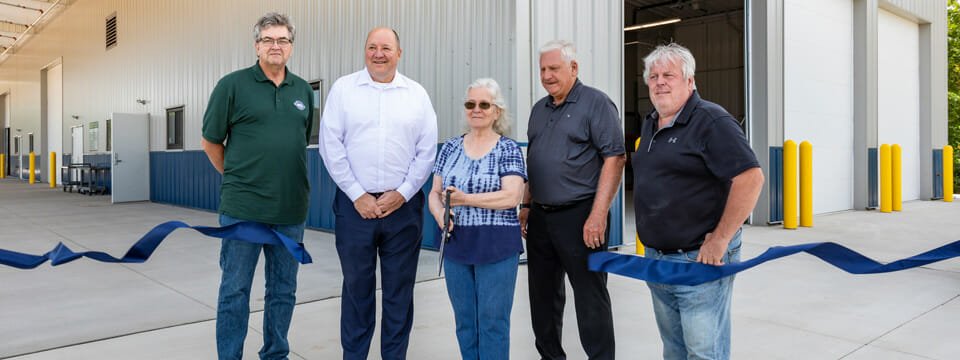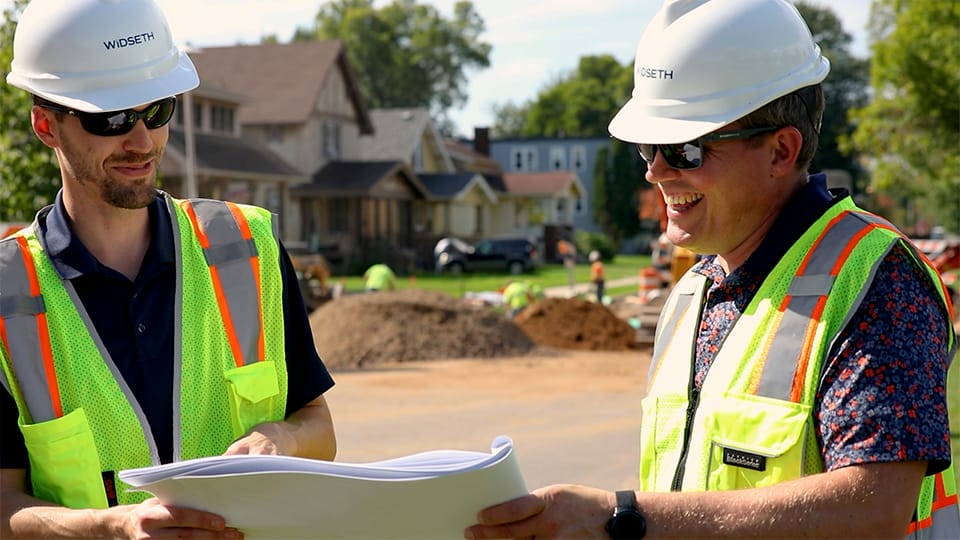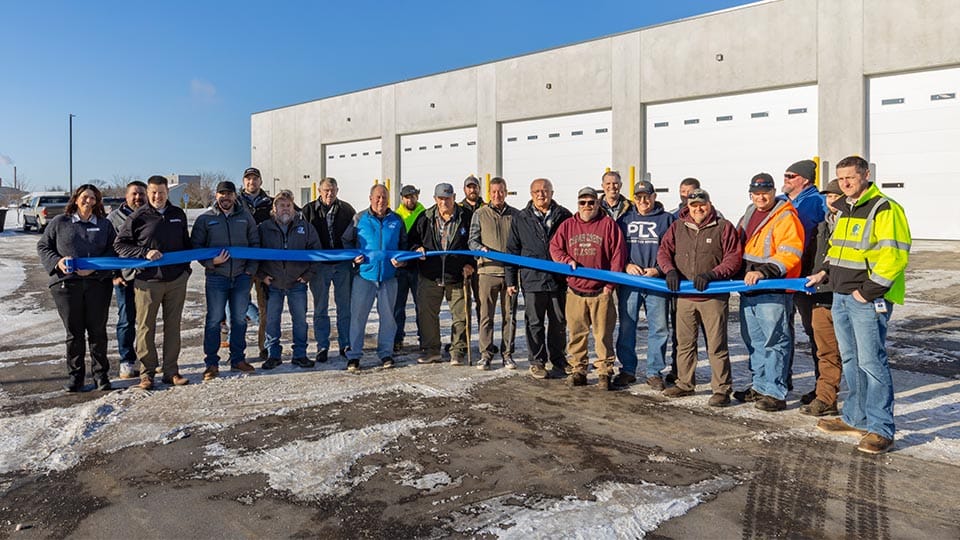Crow Wing County is dedicated to recycling. Almost 900 tons of material was recycled through the County Recycling Program last year. The County’s recycling efforts took a big step forward recently with the new Crow Wing County Recycling Center opening at the landfill site just east of Brainerd. A ribbon-cutting event was held on July 11 to celebrate, and five County Commissioners were in attendance. Pictured above from left are County Commissioners Jon Lubke, Paul Koering, Rosemary Franzen, Steve Barrows, and Doug Houge.
“We are exceeding state standards, increasing recycling, and reducing the amount of material being placed in our landfill,” stated Crow Wing County Operations Manager Jessica Shea.
In early 2022 consulting firm Burns & McDonnell contacted Widseth to design a new recycling center for Crow Wing County. Burns & McDonnell has been a long-time partner with the county providing engineering and environmental services. Widseth worked closely with Crow Wing County’s Land Services Director Gary Griffin to bring the recycling center project to life. We provided civil, structural, mechanical, and electrical engineering services; as well as architecture and land surveying. The project was built by Hy-Tec Construction.
Many facets are involved in planning, designing, and constructing a new recycling center. Here are five things we recommend you consider as you plan for your project.
Crow Wing County Recycling Center.
Five things to Consider for a New Recycling Center
Tour Other Recycling Centers
Establish a group that involves a variety of county staff, the design team, and any key stakeholders. Schedule tours at recycling centers in communities that are similar to yours. Ask the people who work at each facility what they like and don’t like about the center. You’ll come away with useful information and a clear vision for your recycling center.
Pick the Right Location
Selecting the right location for your recycling center is critical. Consider easy access for residents and businesses. Pick a location that’s near major roads and can capitalize on existing traffic patterns. It’s also important to think about the possibility of expansion and in which direction that may occur.
Assess Infrastructure and Facilities
Is the necessary infrastructure present? Assess the current condition and location of utilities such as water and electricity. Determine the space needs and layout for different types of recycling, such as paper, plastic, glass, electronics, and household hazardous waste (HHW). Think about how existing facilities could supplement the new center. Sorting and processing equipment, storage facilities, and administrative spaces should all be considered.
Study Environmental Impacts
Evaluate the environmental impact of the recycling center. Consider the potential impacts on the surrounding area, wildlife habitat, or water sources. It’s also important to fully understand the condition of the proposed site. Widseth’s environmental services team can conduct a variety of environmental reviews and assessments, delineate wetlands, collect soil and water samples, and help with permits and applications.
Engage the Pollution Control Agency (PCA) Early in Design
It’s important to communicate with your state’s Pollution Control Agency (PCA) early during the design process. They have a design standards guide, which focuses mainly on HHW, that will serve as a roadmap moving through design. Ask for input and figure out how to incorporate their recommendations. This will save you time down the road.
A successful recycling center requires community support and participation. Consider how to engage and educate the local community about the benefits of recycling and the proper use of the facility. Contact Widseth if your county is considering a new recycling center.

.jpg)



